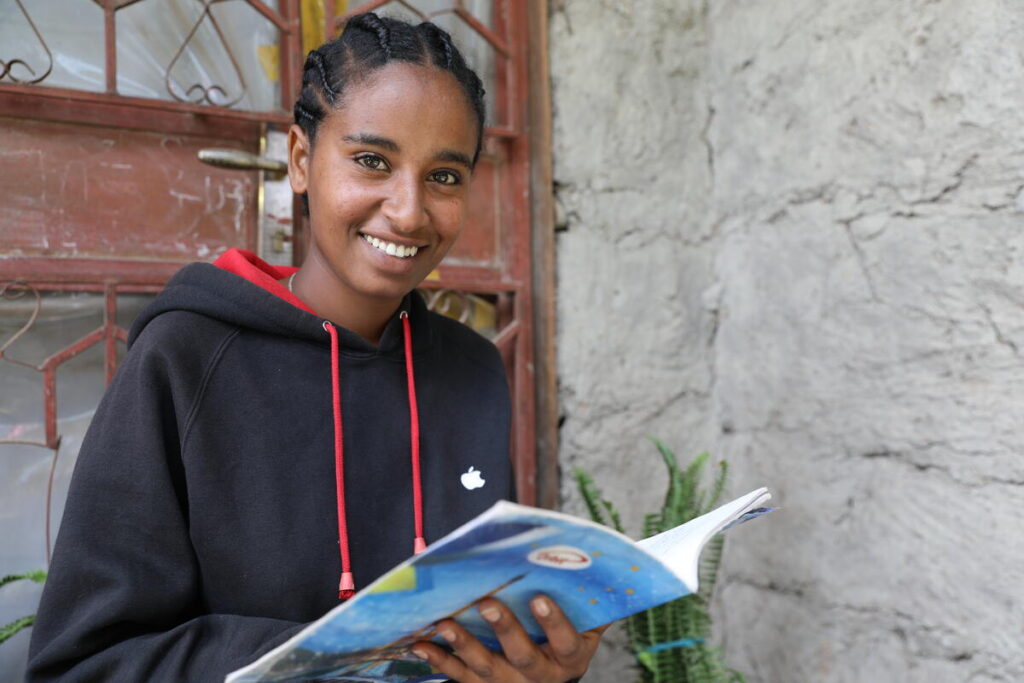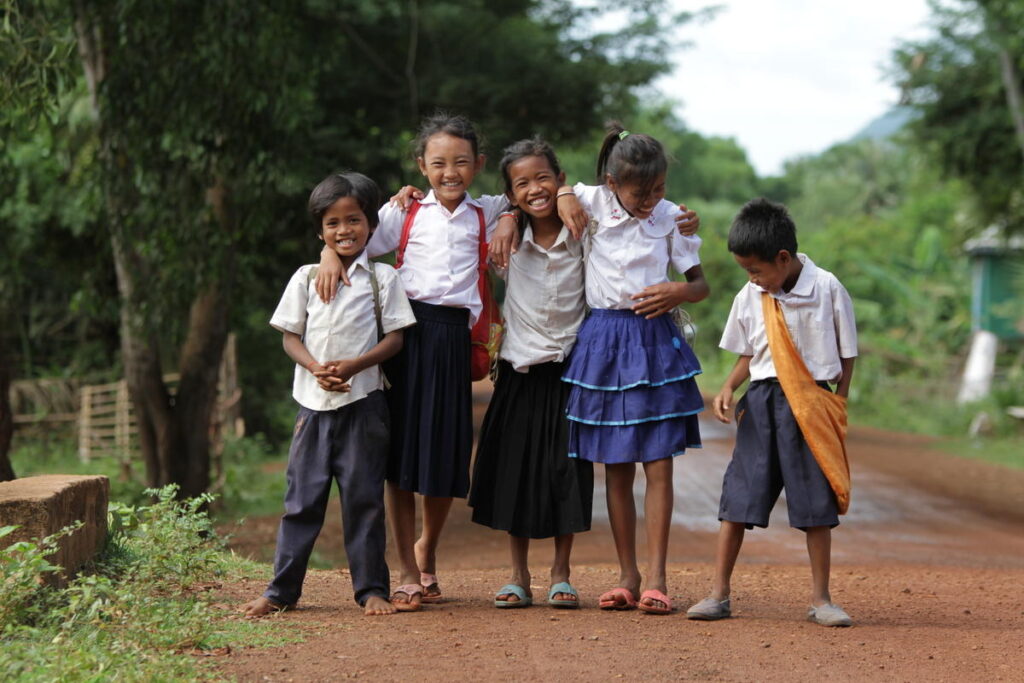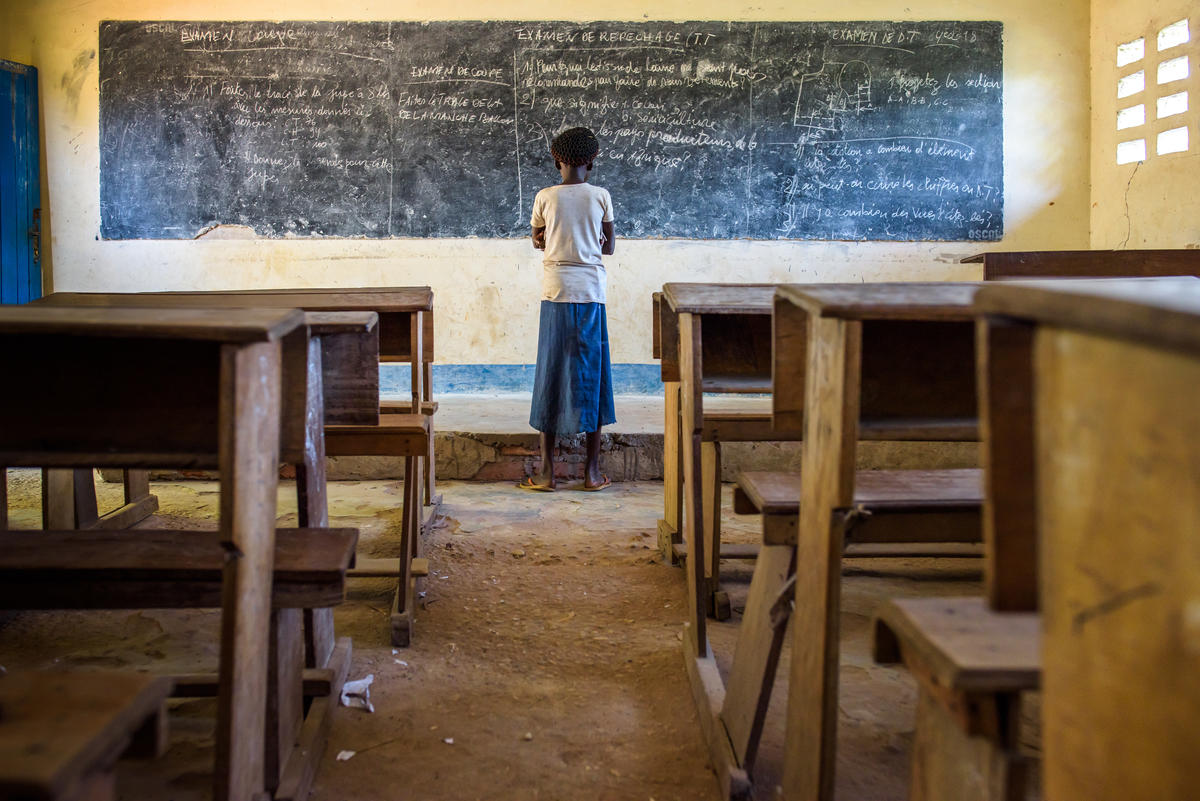Estimated read time: Three minutes
Written by: Anny Lin, Youth & Student Fellow at Global Campaign for Education-US. Emily Davis, Research Associate for the Children’s Policy & Funding Initiative at Tides, Research Fellow at Strategy for Humanity. Meghana Srikrishna, Youth, Peace, & Security Fellow at Search For Common Ground.
When we advocate here at World Vision, we like to say we advocate for justice for children. “But what does that mean?” You may ask. “What does advocacy and justice for children ACTUALLY look like?”
Well, it looks a lot like Nasiba, a 16-year-old girl from Kabul, Afghanistan.
Right now, 2.22 million girls in Afghanistan have been out of school for over 300 days. For Nasiba (a pseudonym), a 16-year-old Afghan girl from Kabul, the local government’s decision to ban girls’ education past primary school has had a catastrophic impact on her life and future. Like millions of adolescent girls around the world, Nasiba dreams of having the independence and choice to pave her own path: “I want to go to school and become an independent woman who chooses and decides for her life…If I am educated, men wouldn’t dare to interfere but if I am not, they will decide my whole life for me” (2021).
In recent years, the ever-evolving conditions of the COVID-19 pandemic, climate disasters, ongoing humanitarian emergencies, and protracted crises in Ukraine, Myanmar, Afghanistan, South Sudan, Yemen, and many other regions around the world have exacerbated the global education crisis and existing structural inequities for the 1.8 billion children and youth. Since the beginning of the COVID-19 pandemic, 1.5 billion children have been affected by school closures and at least 1 in 3 of the world’s schoolchildren (463 million children) were unable to access remote learning while schools were shuttered. The ongoing impacts of COVID-19, compounded with other interrelated emergencies, have placed 222 million children and youth living in conflict-affected regions in critical need of access to education.
For girl-children and adolescents, the effects of these emergencies on their education are uniquely gendered. In crisis settings, girls are disproportionately at risk of experiencing poverty, gender-based violence, and forced marriage, which further amplify barriers to safe, quality, inclusive education. At least 1 in 5 primary-aged girls living in conflict-affected regions are unable to access quality education. It is estimated that, as a result of COVID 19 and other shadow pandemics, an additional 11 million secondary school aged girls may never return to school. In spite of these somber statistics, children and youth around the world have had no choice but to remain resilient against rising attacks on their education, wellbeing, and lives.
To address the education and learning crises, Heads of States, policymakers, civil society, children and youth advocates, and other key stakeholders in the humanitarian-development nexus must use a whole-child approach to take tangible actions that prioritize safety, wellbeing, and lifelong learning for all crises-affected children and youth, including the most vulnerable populations of girls and persons with disabilities.

Youth Leadership and Intergenerational Partnerships: The Path Towards Transforming Education
The Transforming Education Summit provides a critical opportunity for young people around the world to collectively contribute recommendations to UN Secretary-General, António Guterres through the Youth Declaration, youth-led consultations, and national consultations. From Salta, Argentina to Kakuma Refugee Camp in Kenya, youth advocates – including Doris Mwikali, Cynthia Nyongesa, Nhial Deng, and Sofía Bermúdez – have led grassroots youth consultations to ensure that the voices of the most vulnerable and underrepresented populations of children and youth are recognized and meaningfully integrated into the Transforming Education process.
Meaningful, active, and inclusive youth participation, engagement, and partnership must be prioritized as a core pillar of effective policy and programming in education. When young people are empowered through resources and opportunities for equitable partnerships, they gain a greater capacity to remain resilient for themselves and their communities. As advocates of the Children’s Foreign Policy and Funding Initiative’s Youth Alliance Working Group, we urgently call on Heads of States, Ministries of Education, participants and organizers of the Transforming Education Summit, and all education stakeholders to actively and meaningfully listen to children and youth voices, include children and youth as equal partners in critical discussions and actions on commitments during and after the Summit, and prioritize children and youth first. In the midst of the COVID-19 pandemic, climate crisis, war, and other humanitarian emergencies, we believe that change must start with open and meaningful intergenerational accountability and partnerships between youth, policymakers, and advocates.

To support girls around the world, we encourage you to ask your members of Congress to cosponsor the Keeping Girls in School Act. Help us get the bill over the finish line in the 117th Congress:
ACT NOW:
Top photo: Marie Ngalula, age 14, standing in the classroom of a school she dreams of attending in the DRC. Her family isn’t able to send her to school due to finances. (©2018 World Vision/Jon Warren)


